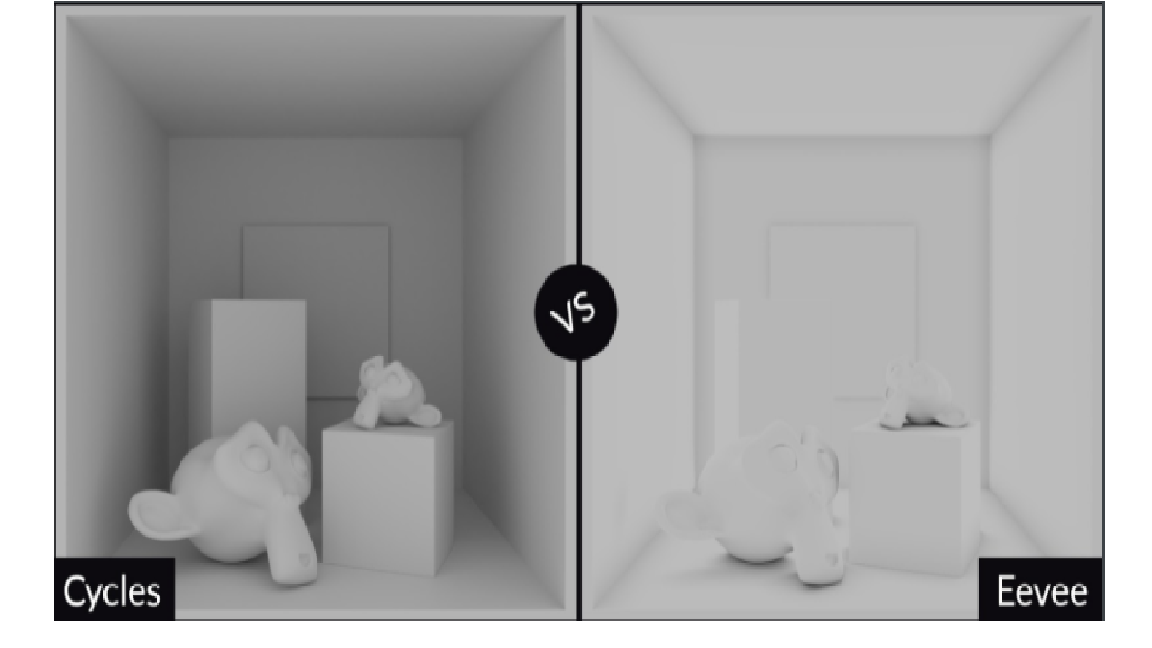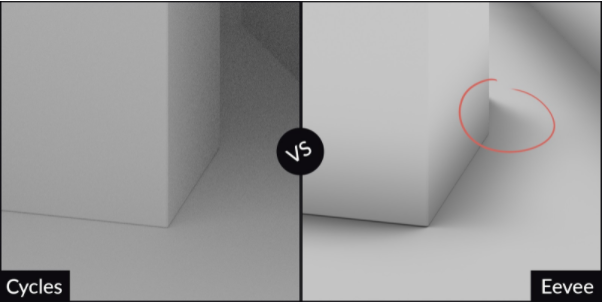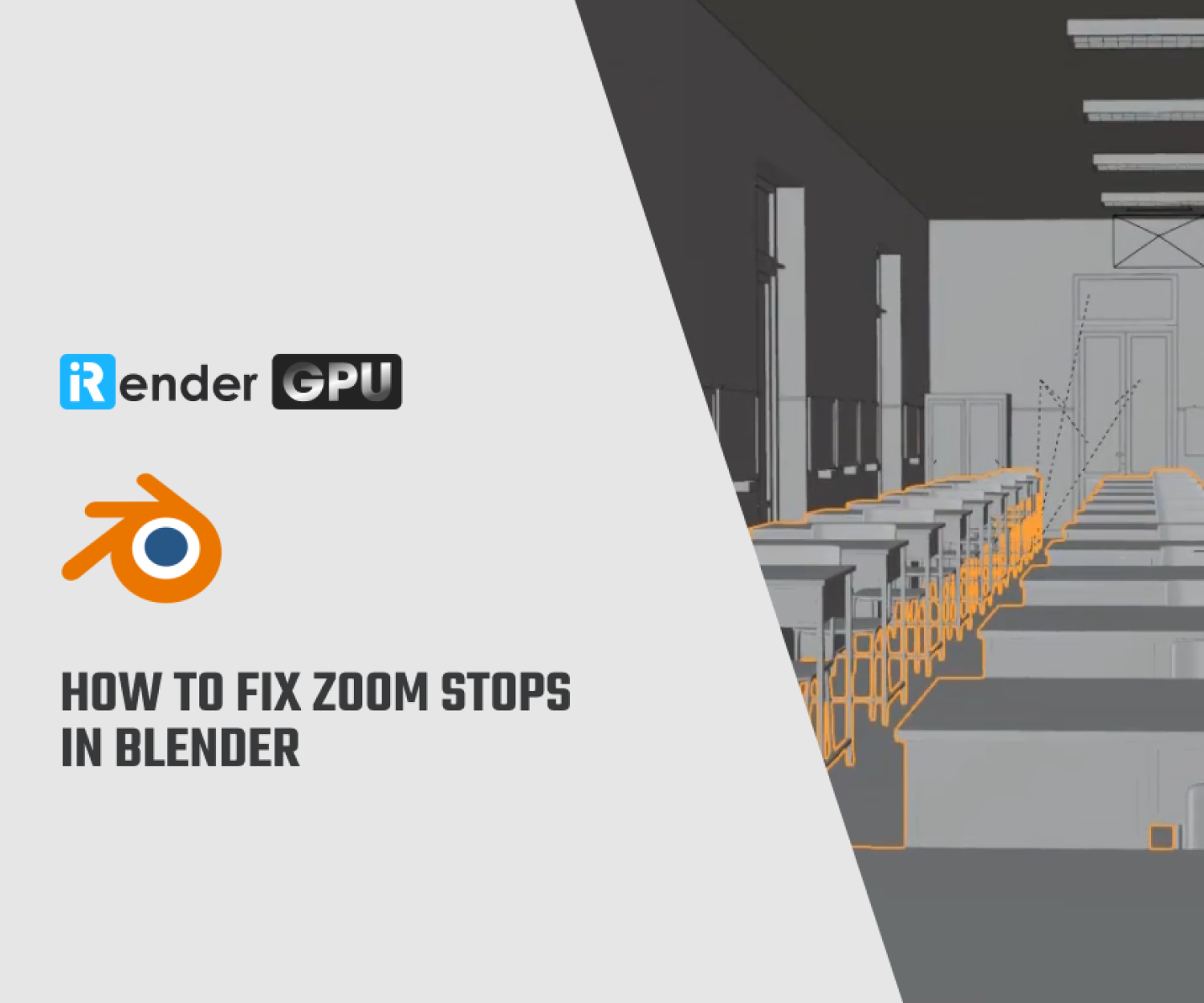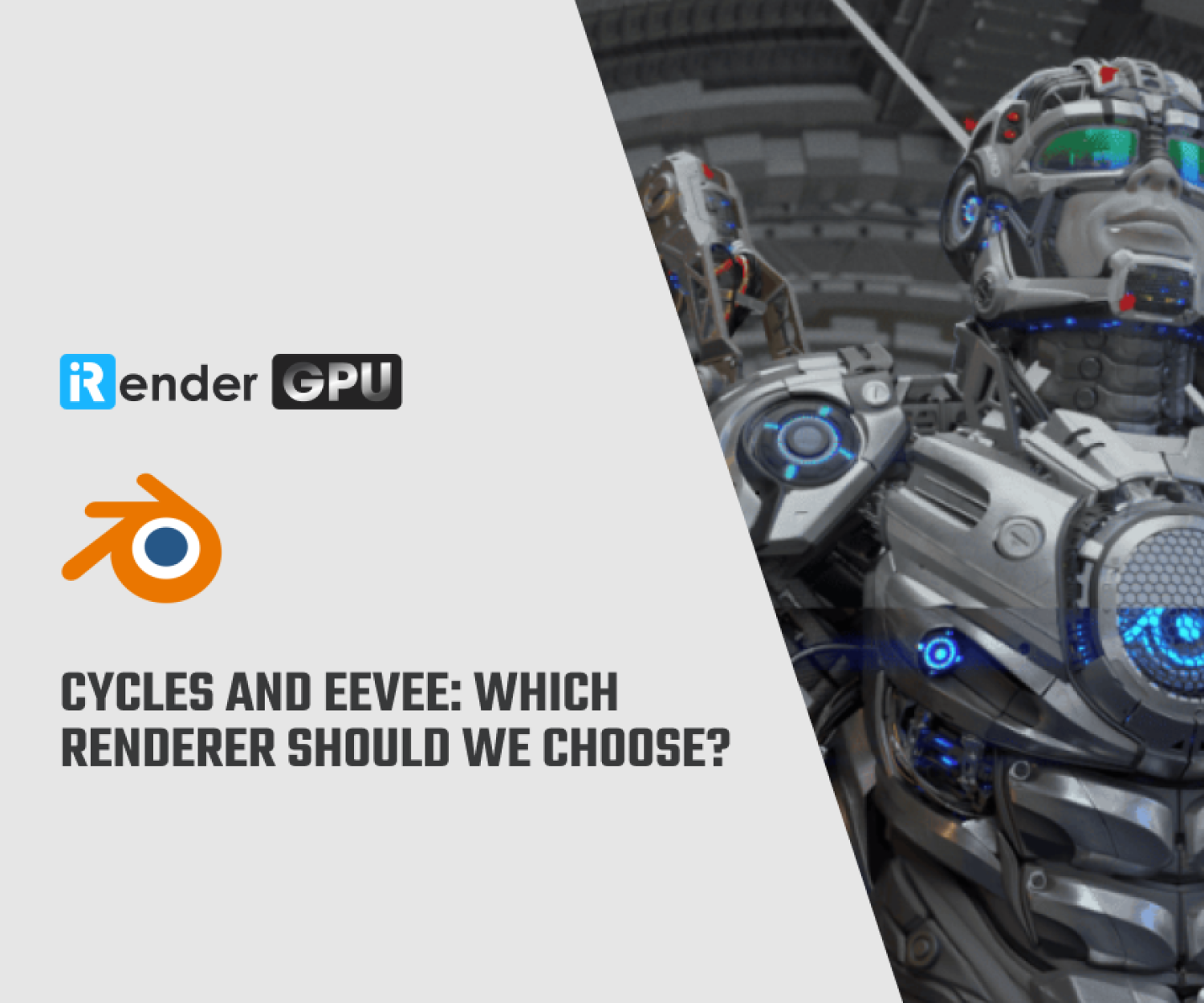Differences between Cycles vs Eevee in Blender 2.8
As you are reading this article, you are probably already learning or using Blender. But have you ever wondered why learning 3D with Blender is attractive in the middle of a forest of other famous 3D graphics software?
Blender is a free 3D design software with a diversity of functions and plugins, backed by many big artists and companies behind. Blender is released under the GNU General Public License (GPL, or “free software”). In the scope of this article today, iRender will help you evaluate the aspects between Cycles vs Eevee. It’s tempting to think of features as a checklist (ambient occlusion, refraction, etc.…), see that they are present in both engines, and assume that they are both capable of the same things. However, because of their differences in rendering methods, Eevee renders can get convincingly close to Cycles in many areas.
1. Ambient Occlusion Cycles vs Eevee
Cycles ambient occlusion is based on the distance between surfaces in 3D space. Eevee AO is based on the distance between surfaces according to the 2D image the screen sees. It manages to still look quite good because it uses a depth pass to determine where to fade out the AO so that it doesn’t cast on objects far behind it (you’ll notice this in 2.79’s viewport AO). However, you’ll still often see occlusion ‘attach’ itself to objects before the depth cutoff takes effect.
Eevee can only occlude a set distance away from an object. In the first Cycles render above, notice how the sides of the box have large gradients and the surfaces where the monkey heads sit have small gradients. The combination of both sharp and broad transitions between light and dark looks very natural. In Eevee, both areas of gradients are the same size, causing the sides of the box to look flat and the occlusion beneath the monkeys to look overly dark.
2. Global Illumination Cycles vs Eevee
Cycles has global illumination (a.k.a indirect lighting, radiosity, etc…) baked deep into how it works. Light paths pick up data (like what color has already been absorbed) from each time they bounce and uses that information to determine what to do when it hits the next surface.
Eevee definitely uses light probes to approximate it. Light probes essentially take snapshots of the scene from their point in space, and project the appropriate colors onto objects in their vicinity. This is called baking, and the data is stored and not updated every frame. Therefore, objects with baked indirect lighting should not be animated.
An massive amount of light probes would result in the scene looking about the same as in Cycles, but of course that would take an eternity to bake. The limited amount of light probes means that the space between them must be approximated, which can result in artifacts. In the render above, notice the faint dark splotch on the blue cube, and the uneven occlusion where it meets the ground.
3. Reflections
At this point you can safely assume that any feature of Cycles works by bouncing rays of light, so great reflections are not surprising. Eevee uses a couple tricks to try to mimic this, but of course it still ends up a ways away from accuracy. Screen space reflections work by taking the resulting image from the camera and flipping it around. This is fast and looks great in most circumstances, but cannot work with anything not seen by the camera such as the backs or bottoms of objects.
Eevee can also use reflection probes, which are planes, cubes, or spheres that act like virtual cameras. They render what is around them and then map that image onto the object. Since planes are quite simple they can be updated in real time, but cube and sphere maps need to be baked and therefore the objects they are getting data for will not look right when animated. It’s also rare that an object is a perfect cube or sphere, so the mapping will also introduce some imperfections.
4. The Best Cloud Rendering Service for Blender
We hope this overview will help you choose a suitable package. As you may know, iRender provides a high performance and configurable server system for 3D rendering, AI Training, VR & AR, simulation, etc. With our server, you can install any software you need, add your license, and do whatever you like with your project. These tools above are no exception. Most tools for fluids are computationally expensive. Understanding that, we have different config and package compatible with them, from CPU to single GPU, dual and even multi-GPUs.
Let’s see rendering tests with Blender on server 2/4/6x RTX 3090 the latest NVIDIA CARD RTX 3090 with 24GB VRAM will help you reduce your render time very much at iRender:
Moreover, iRender has many more to offer.
- Free and convenient transfering tool: iRender offers a powerful and free file transfer tool: Gpuhub Sync. With fast file transfer speed, large data capacity, and completely free. You can transfer all the necessary data into our Gpuhub Sync tool at any time without connecting to the server. The data will be automatically synchronized in the Z drive inside the server, ready for you to use.
- Flexible price: You can always save from 15% to 30% with our Fixed Rental feature. For those who’s in need of server more than a day, or have extremely large project, we advise to choose daily/ weekly/monthly rental package. The discount is attractive (from 15 to 30% depends on your package), and you don’t have to worry about over-charging if you forget to shutdown the server. In this July, we offer a discounted price for GPU server 3 and other servers, users will take advantage of these to level up their renders.
- Real human 24/7 support service, helping you to handle the problem quickly, effectively, saving you both time and money.
If you have any questions, please do not hesitate to reach us via Whatsapp: +(84) 916017116. Register an ACCOUNT today and get FREE COUPON to experience our service. Or contact us via WhatsApp: +(84) 916017116 for advice and support.Thank you & Happy Rendering!
Source: blenderguru.com
Related Posts
The latest creative news from Blender Cloud Rendering.











